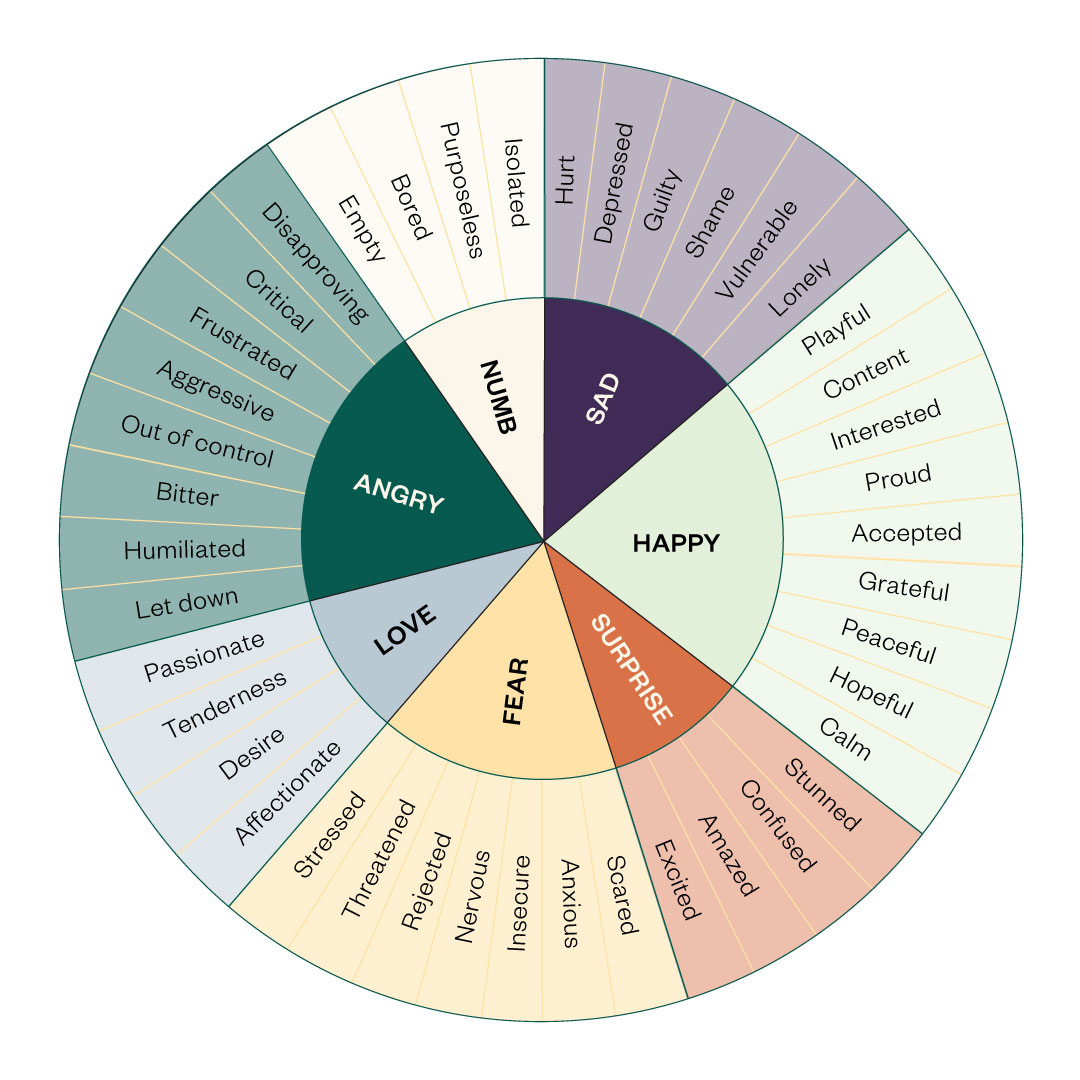
Saprea Support Groups > Group Materials >Everyday Mindfulness
Group Activity
Anchoring to the Present
When you practice grounding, you are learning to anchor your attention to the present. By doing so, you can be more aware of what you need in any given moment—whether it’s calming your body’s breathing, redirecting distressing thoughts, or reminding your aroused limbic system that you are in a safe place.
In fact, many grounding techniques involve selecting an actual anchor to focus your attention on. An anchor, in this context, is anything that you purposefully choose to focus your attention on during times of distress to help bring you back to the present. For example, in some of our grounding exercises, the anchor is your breath. In other exercises, your anchor is safe touch or the list of sensory details you chose to focus on. An anchor can be anything. It could be a thought, a quote, a lyric, a memory, an image, or a word—whatever has meaning to you. It can even be a tangible object—one that you carry with you, like a thumb stone, a coin, or a piece of jewelry.
Then, when you notice you’re being pushed to the edge of your window of tolerance—whether due to a trigger or to feeling trapped in a distressing thought, memory, or emotion—you can gently redirect your attention back to your anchor and the empowerment and healing it represents.
Activity steps
Part 1—Choosing Your Anchor
01
It can be anything that has meaning to you and that you’d like to focus on. For example, if you know today will be an overwhelming day, you might choose the word “calm.” Or, perhaps you want to choose a color that represents the kind of day you’d like to have.
02
Place the note someplace where you’ll see it every day. The bathroom mirror may be a good place. Or, if your anchor is a tangible object, keep that object near you or in your pocket.
03
Direct your attention toward your anchor and the empowering thoughts and actions you associate with it. You might also try saying your anchor out loud once a day. It may feel a little awkward at first, but you’ll be surprised by how effective it can be.
04
Your anchor never has to be set in stone. What works as an anchor for you now may not be as useful to you later. Change your anchor depending on your situation, intention, or focus. You get to choose, so your anchor can be whatever you need it to be.
Part 2—Anchor Through Writing
01
If you are struggling to pick an anchor, here are a few more ideas that might help:
- The pressure of your feet on the floor.
- Sounds that come and go in the space around you.
- An item you are using in this activity (the paper you’re writing on, the pen you’re holding, the chair you’re sitting in, etc.).
- An encouraging thought, emotion, word, or idea (e.g., “I have the capacity to heal”).
02
To help you refocus, you may choose to bring your writing back to your first sentence or rewrite the name of your anchor. If there is a thought your attention keeps returning to, you may also try making that thought your new anchor and purposefully giving it your full attention.
03
Here are a few ideas:
- Save your writing and add on to it later.
- Create a plan to apply or implement any insights you’ve had.
- Discard or destroy your writing as a release.
- Share your writing with others who are supportive.
Grounding Exercise
Mindful Movement
Mindful movement can help you feel reconnected with your body and ground you to the present moment. It can even help you to move through certain thoughts and emotions that you may feel stuck in. During this activity, as we gently engage with our bodies, be mindful of the sensations you experience. Try to observe those sensations with curiosity and without judgment.
So let's begin.
Activity Steps
- Stand up or remain seated if that feels right for you.
- Now stretch out your left arm and wiggle your fingers.
- Stop wiggling your fingers and make a few circles with your wrist.
- Next, swing your left arm forward and backward at the shoulder.
- Now let’s focus on the right side. Stretch out your right arm and wiggle your fingers.
- Stop wiggling your fingers and make a few circles with your wrist.
- And finally, swing your arm forward and backward at the shoulder.
- Now put your hands on your hips and stretch your whole upper body to the left.
- Then stretch your whole upper body to the right.
- Now reach your hands up over your head and stretch for a few seconds.
- Roll your shoulders forward in circles a couple of times.
- Reverse directions and roll your shoulders back in circles a couple of times.
- Drop your neck forward to make clockwise circles a couple of times.
- Reverse directions and make a couple of circles.
- And finally, shake out every part of your body—your hands, your arms, your feet, your legs, and your head.
- Once you finish, give yourself a moment to notice the thoughts, emotions, and physical sensations you are experiencing.
Video Option
Watch this video and follow along as Saria guides you through a mindful movement activity.
Hosting Your Meetings Off-Line? Download All of the Materials You Need Here:
Additional Resources
Done With This Topic? Jump to the Next.

Difficult Relationship with the Body

Everyday Acknowledgement






